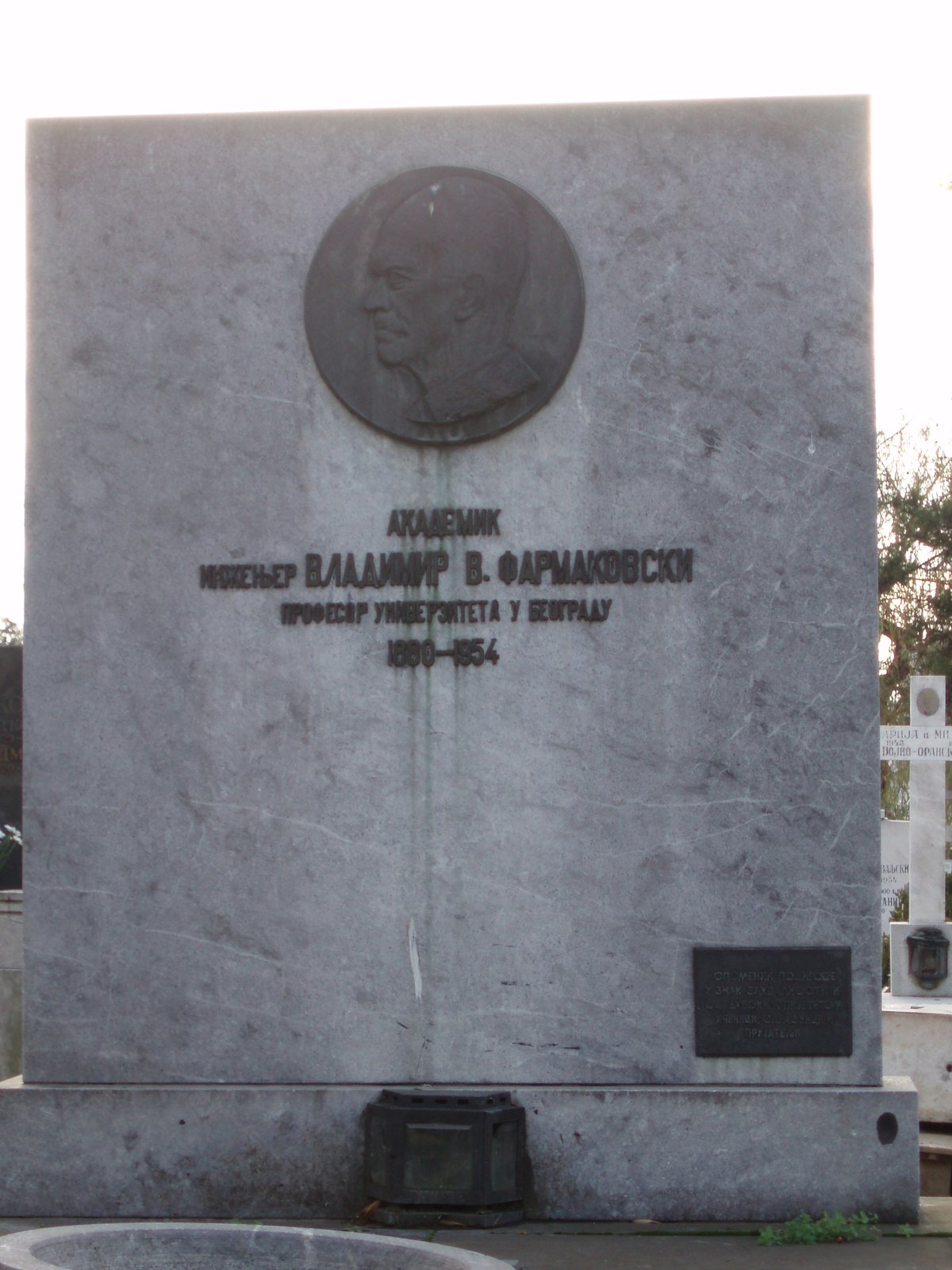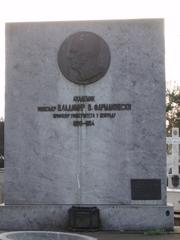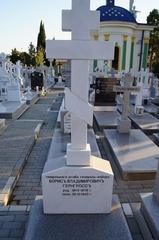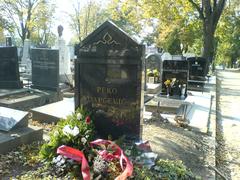
Belgrade New Cemetery Visiting Hours, Tickets, and Travel Guide
Date: 14/06/2025
Introduction
Belgrade New Cemetery (Novo groblje) stands as one of Serbia’s most significant cultural, historical, and artistic landmarks. Established in 1886, it serves not only as a burial ground but also as an expansive open-air museum, reflecting Serbia’s complex history and commemorating distinguished national and international figures. With over 1,500 monuments crafted by renowned Serbian and European artists, the cemetery is the country’s largest collection of funerary art and a proud member of the European Cemeteries Route. Visitors can explore notable sections such as the Alley of the Greats, military cemeteries, and architectural marvels like the Church of Saint Nicholas. This comprehensive guide covers Belgrade New Cemetery’s visiting hours, ticket and accessibility information, notable sections and monuments, and practical travel tips to ensure a meaningful and respectful visit. For detailed insights, planning, and resources, consult the Belgrade Tourism Board and Alternative Serbia.
Table of Contents
- Introduction
- Historical Background and Establishment
- Architectural and Artistic Heritage
- National Memory and Cultural Significance
- Military and International Memorials
- Religious and Multicultural Features
- Visitor Information
- Notable Sections and Monuments
- Etiquette and Visitor Guidelines
- Practical Travel Tips
- FAQ
- Conclusion and Call to Action
- References
Historical Background and Establishment
Belgrade New Cemetery was established in 1886, initiated by Dr. Vladan Đorđević, to serve the needs of the city’s expanding population. It replaced the older Tašmajdan Cemetery, and its design drew inspiration from contemporary European cemeteries, emphasizing symmetry, landscaped green spaces, and dignified urban planning (ar-tour.com). Its original area of 2 hectares has expanded to over 30 hectares, reflecting the city’s growth and evolving memorial traditions (belgrade-beat.rs).
Architectural and Artistic Heritage
The cemetery is an unrivaled open-air museum, home to more than 1,500 sculptures and monuments by over 130 distinguished artists (significantcemeteries.org). The diversity of artistic styles—ranging from Neo-Byzantine and Art Nouveau to Modernism—mirrors the shifting tastes and historical periods of Serbia. Notable architectural features include the Church of Saint Nicholas and grand family mausoleums, often adorned with allegorical figures and intricate reliefs (leightontravels.com). The cemetery’s urban design, with broad avenues and tree-lined paths, creates a tranquil environment that integrates nature, architecture, and sculpture.
National Memory and Cultural Significance
Belgrade New Cemetery is the final resting place for over 700,000 individuals, including many of Serbia’s most influential figures. The “Alley of the Greats” (Aleja velikana) and “Alley of Distinguished Citizens” (Aleja zaslužnih građana) honor writers, scientists, artists, politicians, and national heroes such as Nobel laureate Ivo Andrić, geographer Jovan Cvijić, and war heroine Milunka Savić (belgrade-beat.rs; leightontravels.com). The cemetery is a living chronicle of Serbia’s intellectual, artistic, and historical achievements.
Military and International Memorials
The cemetery contains dedicated sections for soldiers from the Serbian-Ottoman War, Serbo-Bulgarian War, Balkan Wars, and both World Wars. Six foreign military cemeteries honor Russian, French, Italian, British Commonwealth, Austro-Hungarian, German, and Bulgarian soldiers (significantcemeteries.org). The Memorial Ossuary to the Defenders of Belgrade (1914–1918) and the Russian Ossuary Monument are particularly noteworthy, commemorating those who perished in the city’s defense (leightontravels.com).
Religious and Multicultural Features
Central to the cemetery is the Church of Saint Nicholas, built in 1893, reflecting the Serbian Orthodox tradition. Two adjacent Jewish cemeteries (Sephardic and Ashkenazi), administered separately, underscore the multicultural heritage of Belgrade (wikipedia.org). The cemetery also includes a Russian Necropolis, home to émigrés and a Russian Orthodox chapel.
Visitor Information
Visiting Hours
- Spring and Summer: 7:00 AM to 7:00 PM
- Autumn and Winter: 7:00 AM to 5:00 PM
Note: Hours may vary on public holidays or for special events. For the Commonwealth War Graves section, hours are Monday to Friday, 8:00 AM to 4:00 PM.
Tickets and Admission
- General Admission: Free for all visitors.
- Guided Tours: May require advance booking and a nominal fee; check with the official website for current schedules.
Accessibility
- Wheelchair Access: Most main paths are paved and accessible, though some older sections may have cobblestones or uneven terrain.
- Facilities: Public restrooms near the entrance; benches and drinking fountains are available, but bringing your own water is advisable in summer.
Directions and Nearby Attractions
- Location: Ruzveltova Street 50, Zvezdara municipality, about 3 km east of Belgrade’s center.
- Public Transport: Trams 5, 6, 7, 14 and buses 25, 27, 32 stop nearby.
- Taxi/Car: Taxis can drop at the main gate; limited parking is available.
- Nearby: Zvezdara Forest, city center attractions, and local cafes.
Notable Sections and Monuments
Alley of the Greats (Aleja velikana)
Honors Serbia’s most prominent writers, politicians, and national heroes, including Branislav Nušić, Ivo Andrić, and Milutin Milanković.
Military Cemetery
Contains graves of soldiers from the Balkan Wars, WWI, WWII, and features the Commonwealth War Graves section (CWGC), marked by uniform headstones and a central memorial cross.
Jewish Cemetery
A separate area with Hebrew-inscribed tombstones and Holocaust memorials, reflecting Belgrade’s Jewish heritage.
Russian Necropolis
Final resting place for Russian émigrés and officers, with a dedicated Orthodox chapel.
Memorial Ossuary to the Defenders of Belgrade 1914–1918
A monumental memorial containing the remains of thousands of soldiers, designed by Roman Verhovskoj and inaugurated in 1931.
Commonwealth War Graves Section
Maintained by the Commonwealth War Graves Commission (CWGC), this section commemorates British and Commonwealth casualties from WWII, with access available Monday–Friday.
Distinguished Serbian Graves and Family Mausoleums
Family mausoleums and graves of leading Serbian statesmen, artists, and scientists, often featuring elaborate sculptures and symbolic motifs.
Etiquette and Visitor Guidelines
- Dress Code: Modest attire (shoulders and knees covered).
- Behavior: Maintain quiet and respect for funerals or memorial ceremonies.
- Photography: Permitted for monuments and landscapes, but avoid photographing mourners or services.
- Cultural Customs: Serbian Orthodox traditions are observed; during Zadušnice and other religious holidays, the cemetery is especially active.
Practical Travel Tips
- Language: Most signage is in Serbian; translation apps or guided tours help non-Serbian speakers.
- Weather: Summers are hot; winters can be cold—dress accordingly.
- Duration: Allocate 1–2 hours for a meaningful visit.
- Maps: Obtain at the entrance or download online for self-guided tours.
- Safety: The cemetery is safe during daylight hours; avoid after dark.
FAQ
Q: What are the Belgrade New Cemetery visiting hours?
A: 7:00 AM–7:00 PM in spring and summer, 7:00 AM–5:00 PM in autumn and winter.
Q: Is there an admission fee?
A: No, entry is free. Guided tours may require a fee.
Q: Are guided tours available?
A: Yes, in Serbian and English, especially during special events. Check the official website.
Q: Is the cemetery wheelchair accessible?
A: Most main paths are accessible; some older sections may be difficult.
Q: Can I park nearby?
A: Limited parking, especially during weekends and holidays.
Conclusion and Call to Action
Belgrade New Cemetery is a profound destination where history, art, and national memory converge. With free admission, accessible visiting hours, and a wealth of cultural and historical significance, it stands as a must-visit site in Belgrade. Plan your visit by consulting the latest information on official websites, consider joining a guided tour for deeper insights, and respect the cultural customs during your stay. To further enrich your experience, explore the Audiala app for interactive guides and updates, and check out nearby historical attractions for a comprehensive cultural itinerary.
References
- Belgrade New Cemetery: A Historical and Cultural Treasure – Visiting Hours, Tickets, and Visitor Guide, 2024
- Belgrade New Cemetery: A Historical and Artistic Landmark - Visiting Hours, Tickets & Visitor Guide, 2024
- Exploring Belgrade New Cemetery: Visiting Hours, Tickets, and Historical Monuments, 2024
- Belgrade New Cemetery Visiting Hours, Tickets, and Guide to Historical Sites in Belgrade, 2024
- Commonwealth War Graves Commission (CWGC), 2024
- Significant Cemeteries of Europe, 2011










































































